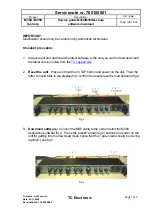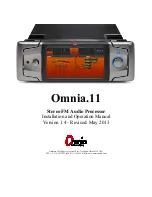
ibaFOB-SDexp
Manual
Issue 1.1
9
5.2
Characteristics
The card has the following characteristics:
PCI Express card for 1.0-x1 compatible slot
100% functional compatible with the predecessor ibaFOB-SD
Firmware update without dismounting the card
1 bidirectional fiber optic channel with 96 Mbit/s (ST coupling)
Absolutely noise free acquisition of process data
Enhanced SIMADYN D system diagnostics
Display for card ID, processor and link status via 7-segment display and LEDs
Up to 4 PCIe cards per PC
Plug and Play installation
All component parameters are 100% controlled by software. No wiring or jumpering
is necessary for that board.
5.3
Operational modes
To measure SIMADYN D system numeric and binary values must be transported be-
tween the SD system and the PC, which means that internal variables of the SD system
may be visualized and recorded. For recording purposes two different software packages
are supported by the ibaFOB-SDexp card:
SD-TDC-lite:
All values to be measured by ibaPDA have to be manually programmed in the con-
trol unit. Changes of signals require a change in this program. Up to 16 process tel-
egrams are to be defined per card which transport the values to ibaPDA containing
32 analog plus 32 digital variables each. Structure and length of the process tele-
grams are determined by ibaPDA. Up to 4 cards in a PC are supported by ibaPDA.
In addition the ibaPDA-Technostring (non-structured ASCII-string with a length of up
to 512 bytes) can be configured.
SD-TDC-Request:
The definition of the signals to be measured is independent of the connected con-
trol unit system. All changes are done in ibaPDA. ibaPDA supports the functionality
to select the internal variables by their names, i.e. the chart, function block and the
connector names. To do that for every SD CPU special service function blocks must
be included in the program of the control unit.
The information about the variable names (address books) is transferred from the
SD CPU to the ibaPDA system directly (for CFC) or is created by the STRUC editor
and then transmitted to ibaPDA by file transfer.
ibaPDA supports up to 4 cards with up to 50 processor connections per card and
additionally the ibaPDA-Technostring.










































